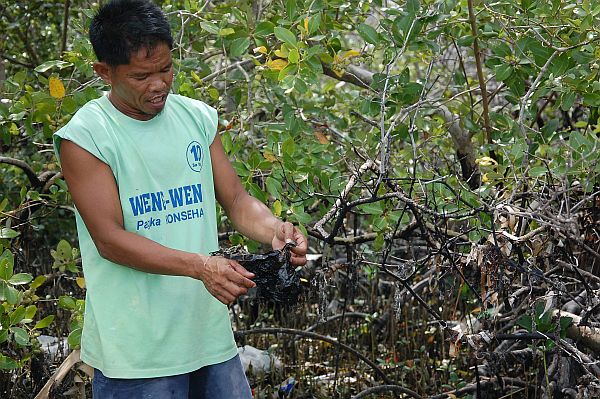
CDN FILE PHOTO
CEBU CITY, Philippines — The Cebu City Environment and Natural Resources Office (Cenro) will be planting 2,000 mangrove saplings at the South Road Properties (SRP).
Lawyer John Jigo Dacua, the head of Cenro, said that the planting of the mangrove trees is part of the “Three Million Trees in Three Years” project for a green and environment-sustainable Cebu City.
Read: Labella’s Promise: Cebu City to plant 3M trees to replace 5 trees cut by DENR
The mangroves will be planted along the banks near the S. Damazo Bridge in Barangay Mambaling where a part of the sea runs across the SRP, which sits on a 300-hectare reclamation project undertaken by the Cebu city government.
Dacua said mangroves are needed to help clean the seas as these types of trees are the natural purifier of seawater, helping address pollution by trapping the trash in the roots.
Furthermore, mangroves are home to a variety of marine life, and the city hoped they would help revive the marine life in the seas off the SRP.
“We are now coordinating with the SRP management for the exact areas where the mangroves can be planted because the SRP banks are generally the jurisdiction of the SRP management,” said Dacua.
On October 5, 2019, Cebu City launched its “Three Million Trees in Three Years” project that aims to replace the lost trees in the city’s mountain barangays in the last century.
The trees are also planted in order to help retain rainwater and replenish the groundwater sources that have been running low in the past decade.
At least 25,000 trees have already been planted by the city government last October.
Dacua urged establishments to volunteer and contribute to this project either by planting trees or maintaining them since the city has limited manpower.
He said some of the trees planted in October have died and they are constantly replacing the dead trees.
Dacua said planting is easy, but growing the trees is the biggest challenge in their goal to have three million trees in three years. /